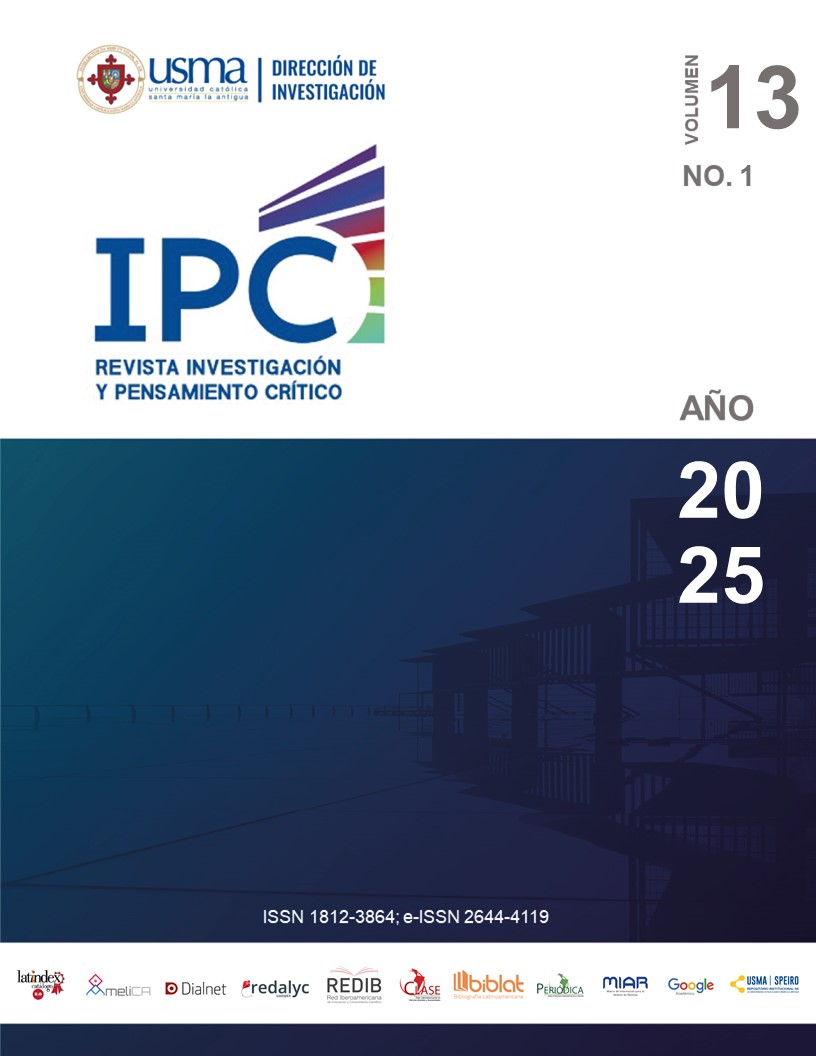Revolution in Structural Design: AI vs. Traditional Methods in Foundations Design
DOI:
https://doi.org/10.37387/ipc.v13i1.398Keywords:
structural design, artificial intelligence, civil engineering, automation, neural networksAbstract
Traditional structural design requires technical knowledge, factor analysis, and regulatory compliance (Ching & Adams, 2019). The process involves gathering information, conducting research, and proposing optimized solutions (Das, 2019). Technology has streamlined mathematical calculations, but the creative phase remains the task of the professional. The design software allows 3D modeling, calculation reports and construction plans quickly, as long as the professional enters the correct information. However, the introduction of GPUs and neural networks is changing the landscape. Now the structural design is proposed through prompt engineering, where the neural network carries out both the creative and design work, supervised by the professional. This significantly reduces the time and effort required compared to the traditional method. The question arises as to how long it will take before the qualified civil engineer is no longer relevant in structural design. Some experts suggest that by 2030, neural networks could overcome the need for human intervention in analytical tasks (Tartaglione, 2019). The article proposes to compare the design of a complex foundation using the traditional method against that carried out by an engineer using three advanced neural networks: Chat-GPT 4o, Gemini 1.5 Pro and Claude 3.5 Sonnet.
Downloads
References
American Concrete Institute (ACI). (2011). Requisitos del Código de Construcción para Concreto Estructural (ACI 318-11) y Comentario.
American Concrete Institute (ACI). (2014). ACI 211.1-91: Práctica Estándar para Seleccionar Proporciones para Concreto Normal, Pesado y Masivo.
American Society for Testing and Materials (ASTM). (2018). ASTM A615/A615M-18: Especificación Estándar para Barras de Acero al Carbono Deformadas y Lisas para Refuerzo de Concreto.
American Society for Testing and Materials (ASTM). (2019). ASTM C31/C31M-19: Práctica Estándar para Fabricar y Curar Especímenes de Prueba de Concreto en el Campo.
American Society for Testing and Materials (ASTM). (2020). ASTM C39/C39M-20: Método de Prueba Estándar para la Resistencia a la Compresión de Especímenes Cilíndricos de Concreto.
American Society for Testing and Materials (ASTM). (2021). ASTM C42/C42M-21: Método de Prueba Estándar para Obtener y Probar Núcleos Perforados y Vigas Aserradas de Concreto.
American Society for Testing and Materials (ASTM). (2016). ASTM A572/A572M-16: Especificación Estándar para Acero Estructural de Alta Resistencia y Baja Aleación de Columbio-Vanadio.
American Society for Testing and Materials (ASTM). (2018). ASTM A36/A36M-18: Especificación Estándar para Acero Estructural al Carbono.
American Society for Testing and Materials (ASTM). (2015). ASTM F1554-15: Especificación Estándar para Pernos de Anclaje, Acero, 36, 55, y 105-ksi de Resistencia a la Fluencia.
Ching, F. D. K., & Adams, C. (2019). Construcción de Edificios Ilustrada (6ta ed.). Wiley.
Das, B. M. (2019). Principios de Ingeniería de Cimentaciones (9na ed.). Cengage Learning.
Hibbeler, R. C. (2018). Análisis Estructural (9na ed.). Pearson Education.
McCormac, J. C., & Brown, R. H. (2018). Diseño de Concreto Reforzado (9na ed.). Wiley.
Nilson, A. H., Darwin, D., & Dolan, C. W. (2019). Diseño de Estructuras de Concreto (15ava ed.). McGraw Hill Education.
OpenAI. (2023). ChatGPT 4.0. https://openai.com/chatgpt
Panamá, República de. (2014). Reglamento Estructural Panameño (REP-2014). Gaceta Oficial de Panamá, No. 27,591-A.
Sezen, H. (2018). Diseño Sísmico de Cimentaciones. CRC Press.
Tartaglione, A. (2019). Aprendizaje Profundo en Ingeniería Estructural. Springer.
Tomlinson, M. J. (2017). Diseño y Construcción de Cimentaciones (7ma ed.). Pearson Education.
Wang, C., & Zhang, Y. (2019). Inteligencia Artificial en Ingeniería Estructural. Springer.
Bowles, J. E. (2012). Análisis y Diseño de Cimentaciones (5ta ed.). McGraw-Hill Education.
Coduto, D. P. (2011). Diseño de Cimentaciones: Principios y Prácticas (3ra ed.). Prentice Hall.
Poulos, H. G., & Davis, E. H. (1980). Análisis y Diseño de Cimentaciones de Pilotes. Wiley.
Terzaghi, K., Peck, R. B., & Mesri, G. (1996). Mecánica de Suelos en la Práctica de la Ingeniería (3ra ed.). Wiley-Interscience.
Winterkorn, H. F., & Fang, H.-Y. (1975). Manual de Ingeniería de Cimentaciones. Van Nostrand Reinhold.
Published
How to Cite
Issue
Section
License
Copyright (c) 2025 https://revistas.usma.ac.pa/ojs/index.php/ipc/stats/reportsinfo:eu-repo/semantics/openAccess

This work is licensed under a Creative Commons Attribution-NonCommercial-ShareAlike 4.0 International License.
1. The authors preserves the patrimonial rights (copyright) of the published works, and favors and allows their reuse.
2. The journal (and its contents) use Creative Commons licenses, specifically the CC BY NC SA type, where: "the beneficiary of the license has the right to copy, distribute, display and represent the work and make derivative works provided you acknowledge and cite the work in the manner specified by the author or licensor."
3. They can be copied, used, disseminated, transmitted and exhibited publicly, provided that: i) the authorship and the original source of its publication (magazine, publisher and URL, DOI of the work) are cited; ii) are not used for commercial purposes.
4. Conditions of self-archiving. Authors are encouraged to electronically disseminate the post-print versions (version evaluated and accepted for publication), as it favors their circulation and dissemination, increases their citation and reach among the academic community.











